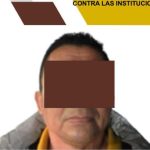In addition to being the capital of the country, Bogotá is also the largest city in Colombia. To get an idea, The territory is divided into 20 localitieswhich give it that touch, between ancient and modern, that characterizes this great city.
(Read more: Which cities had the highest unemployment rate in Colombia in July?)
The localities are also a reflection of Bogotá’s history. A story told through names that, more than just labels, bear traces of the historical events and traditions that have shaped the identity of the capital.
If you have ever wondered why these districts are called what they are, in this brief tour we will tell you a little of the history behind some of those names.
Usaquen
This part of the city was a municipality of Cundinamarca until 1954 and there are two versions regarding the origin of its name.
The first, according to information from the Usaquén mayor’s office, indicates that the term refers to an honorary title that was awarded to chieftains of the highest lineage. Based on the distinction it represented, It is believed that its meaning could be associated with honor, vigor and strength.
The other version suggests that the name derives from a religious practice that is now considered cruel and that was carried out by priests or sheikhs when the chief’s dwelling was to be built. This consisted of placing an immature girl in each of the holes in which the supports of the structure would be placed, and then dropping a piece of wood or a stick on her head.
It was believed that the strength and good luck of the building and its inhabitants consisted of being founded on human flesh and blood. The ceremony intended to fulfill this purpose was known as Usaque, which In the Chibcha language it meant ‘under the stick’: usa (under) and que (stick or wood).
Usaquen
Rodrigo Sepulveda / THE TIME
Chapinero
Legend has it that during the time of the Spanish nobles who lived in the so-called Santafé de Bogotá, a man named Antón Hero Cepeda married the daughter of a chief who owned several lands in what we know today as Chapinero.
Hero was dedicated to the manufacture of slippersa type of footwear that had a high sole, was made of wood and was tied to the legs. Since it was the only one that made them, people began to call the place by the name of the shoes and using the word became a custom.
Thus, according to the Mayor of Chapinero, It was decided that the area would be called Chapinero by Municipal Agreement of December 17, 1885.

Chapinero
Milton Diaz – THE TIME
(Read more: What is the most beautiful building in Colombia, according to ChatGPT?)
Kennedy
In 1961, the then President of the United States, John F. Kennedy, visited Colombia.
His arrival took place within the framework of the ‘Alliance for Progress’, a program of economic, political and social aid that the US implemented in Latin America. The intention was that he would be in charge of lay the first stone of a mega urban project known as Ciudad Techo.
Following the assassination of President Kennedy in 1963, the residents of the already popular Techo neighborhood decided to call the town Ciudad Kennedy, a name that the Bogotá Council ratified in 1967.

Kennedy
Cesar Melgarejo/ The Time
(See: This is the most beautiful lake in Colombia, according to ChatGPT)
Go up
According to the Suba Mayor’s Office, There are two theories associated with the origin of the name of this town.
The first suggests that the word Suba is derived from the term zhu-ba, which in the Muisca language means “my face, my face, my flower” and which, in turn, refers to the face of a person who inspires respect and admiration, demonstrating the emotions and feelings of the soul.
On the other hand, the second version indicates that Suba is the union of two indigenous words, the first Sua, which means sun and the second Sia, which means water.

Go up
Abel Cardenas. EL TIEMPO Archive
The Martyrs
This is the 14th locality in Bogotá and its name was given in honor of the revolutionaries who lost their lives during the colonial era. Among these martyrs are: The author(s) mentioned above are:

The Martyrs
Hector Fabio Zamora / El Tiempo.
(See: This is the most beautiful church in Colombia, according to ChatGPT)
Aranda Bridge
The town of Puente Aranda It is characterized by being the center of industrial activity in Bogotá. Its name comes from the bridge that crossed the marshy land of Don Juan de Aranda over the Chinua River, now known as the San Francisco River, built at the end of the 16th century.
The Aranda Bridge existed until 1944, when construction of Las Américas Avenue began.
United Neighborhoods
In 1930, the country’s capital began a process of industrialization and population growth. Considering that not all inhabitants had access to basic services, Monsignor José Joaquín Caicedo led the way in establishing the first neighborhoods in the town: August 7, Benjamin Herrera and Colombia.
At the beginning of the 1940s, these neighborhoods had the appearance of organized communitiesIn fact, the sector even had an electric tram service.
Thus, during the second government of Alfonso López Pumarejo (1942 – 1945) the area was given the name ‘Barrios Unidos’ and in 1972 the town was created.
(See: What do the names of the departments of Colombia mean and what is their origin)
Teusaquillo
During the Spanish colonial era, the area that is now Teusaquillo was known for being an indigenous reservation town called Teusacá, which means ‘borrowed fence’. It is said that this was the place where the hierarch spent a season of vacation and took advantage of his free time to bathe in the lagoon of the same name.
Although during this period the town did not have much relevance beyond its contribution to agriculture, in the 20th century, when Bogotá began to expand, the neighborhood quickly became an elegant and modern residential area.
(Read more: ABC of paying property value for road infrastructure works)
PORTFOLIO

















